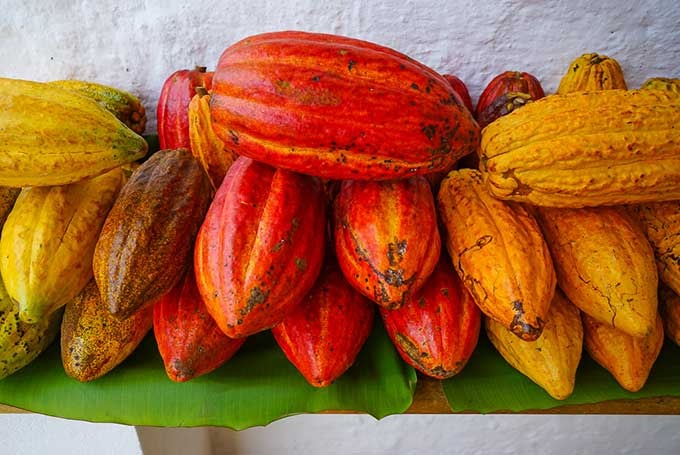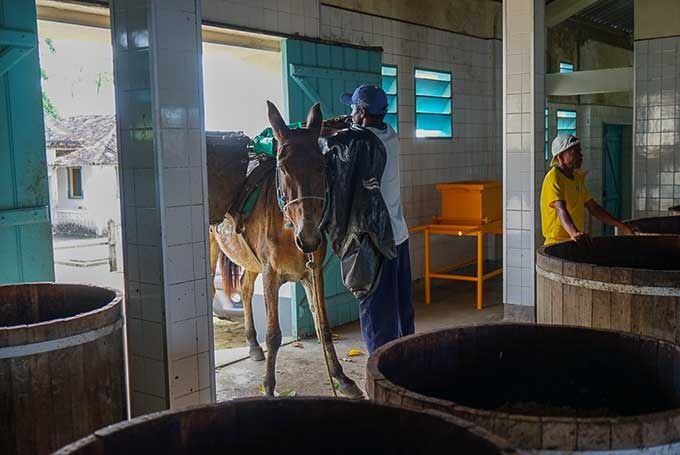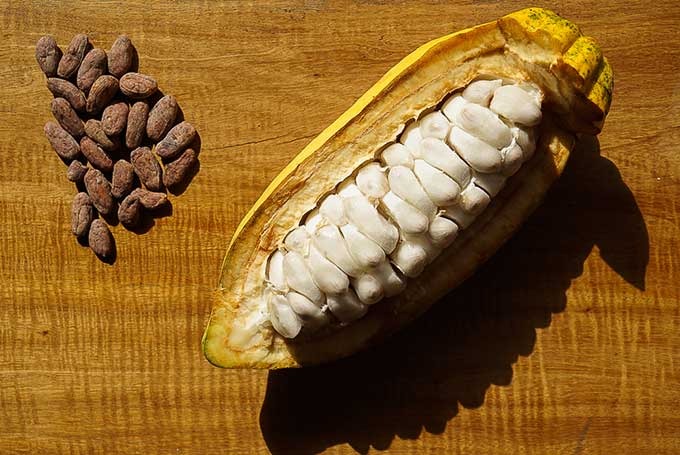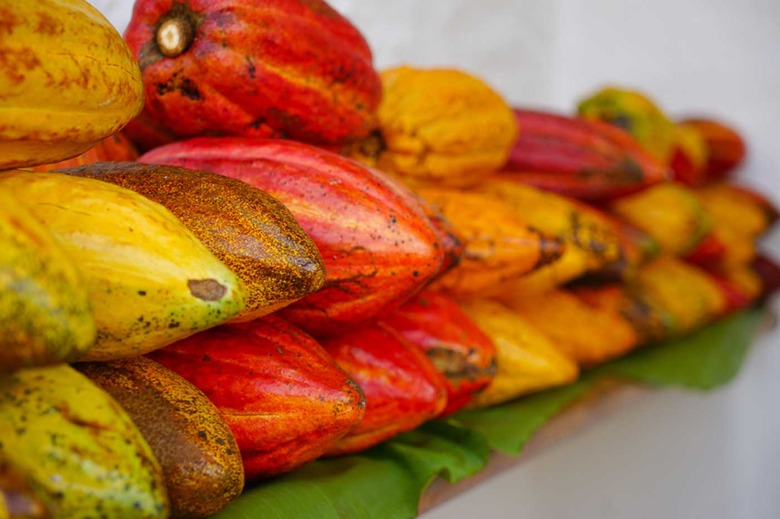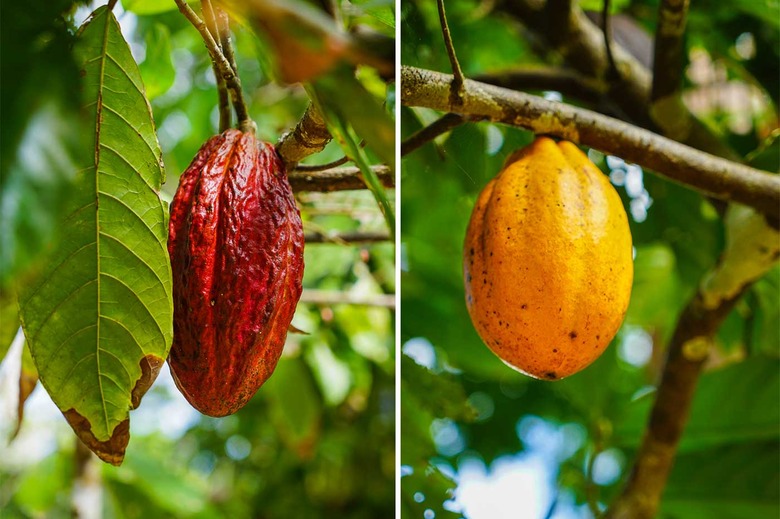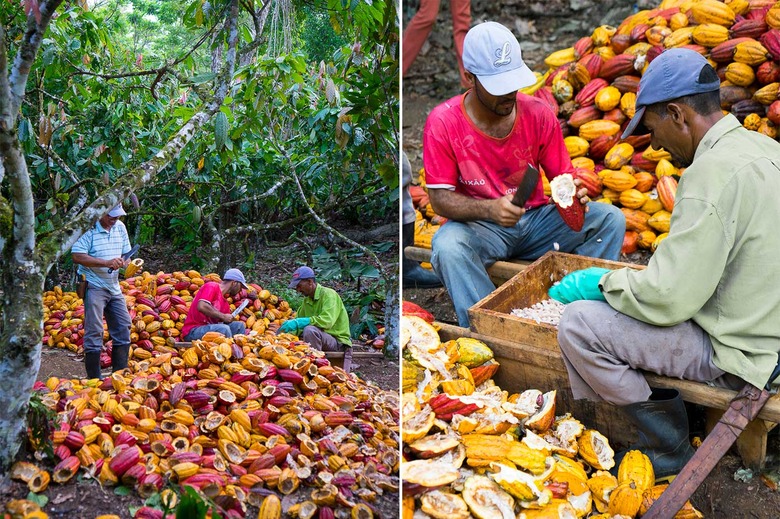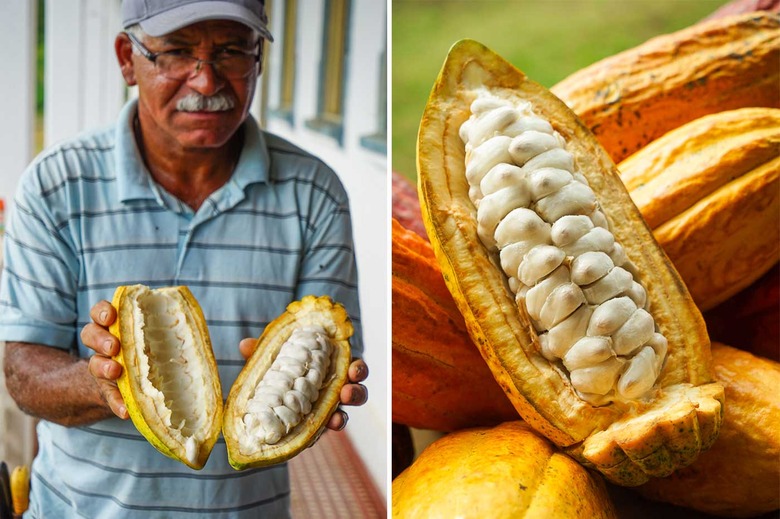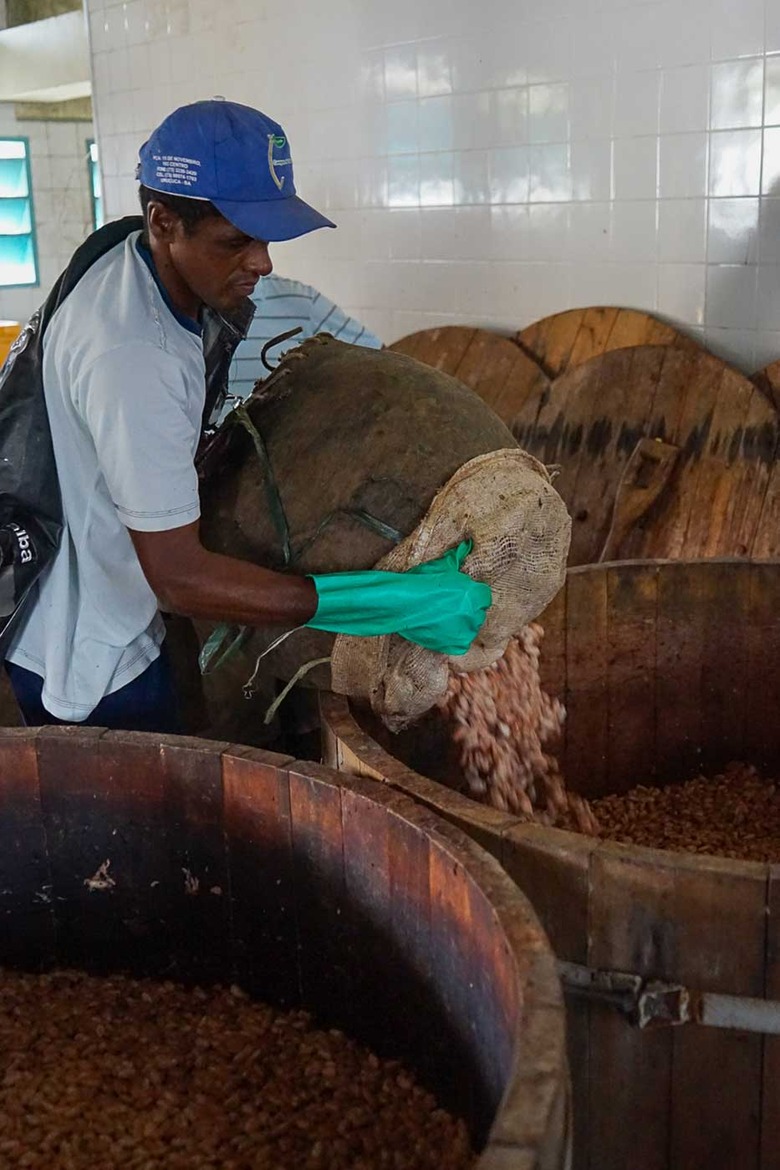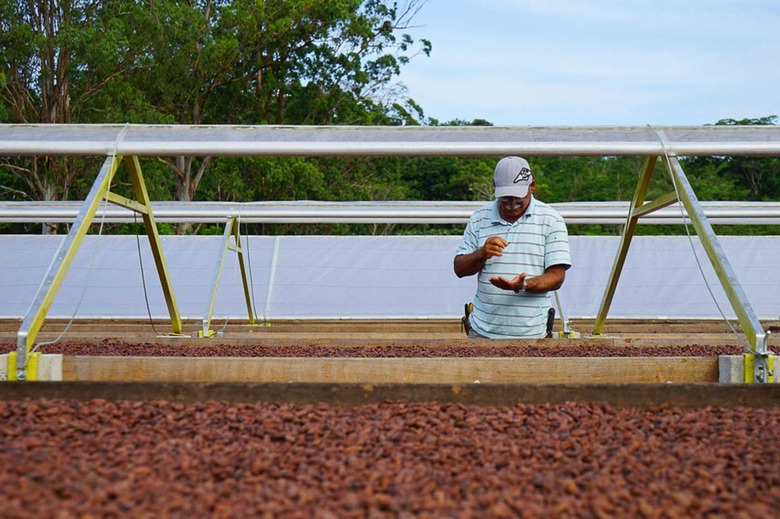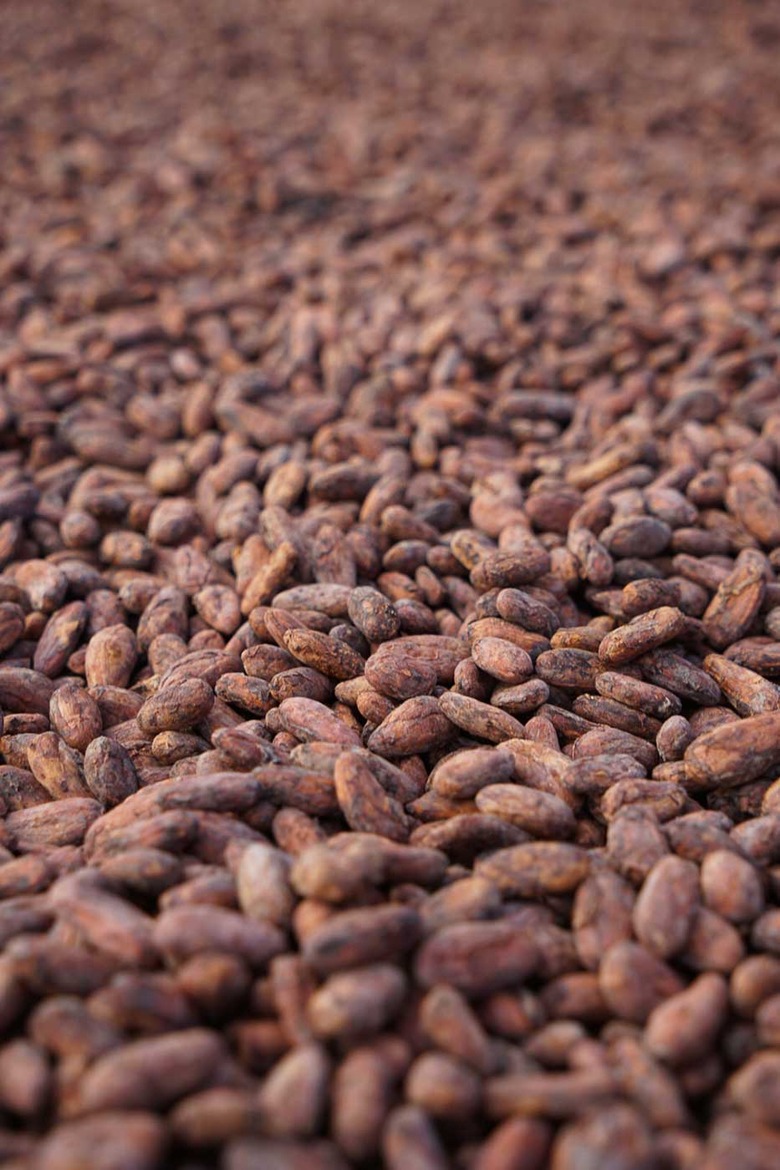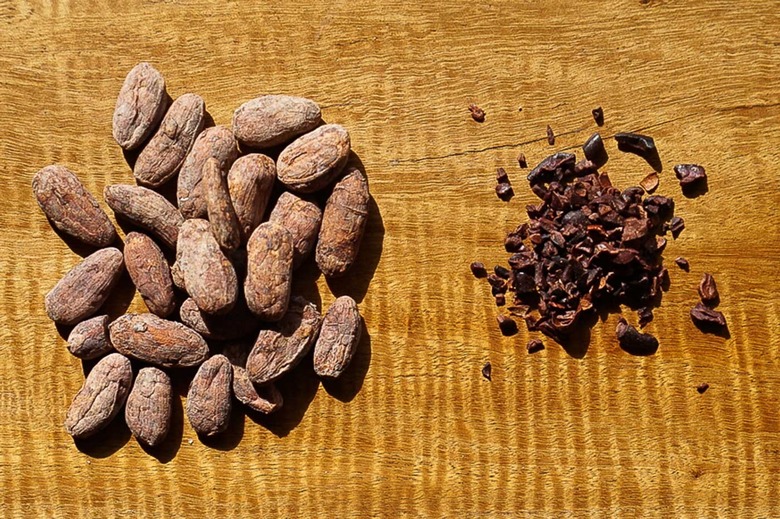How Chocolate Is Made, Bean To Bar
In recent years, Brazil has become a leader in the international chocolate market: It is the seventh-largest cacao producer in the world, known for producing some of the best single-origin chocolate. Brazilian farmers go to great lengths to maximize the natural flavors of the cocoa fruit, a process that ensures the final chocolate is as complex and delicious as possible. These are the steps to transform a cacao plant into a bar of chocolate.
① Plant Selection
It is estimated that there are more than 31,000 different varieties of the cacao plant, but only three types typically used for chocolate production: criollo, trinitario and forastero. Farmers grow clones of these varieties based on their specific flavors—some produce cocoa with dominant flavors of tropical fruit, and others produce floral flavors such as jasmine.
② Planting
Typically, cocoa plants are grown in rows, where they are exposed to the sun and ripen quickly. Brazilian cocoa farmers use a unique planting method called cabruca, an agroforestry strategy that removes existing plants from the lower canopy of the rain forest and replaces those spots with cocoa plants, leaving the upper layers of the rain forest intact. These cocoa plants get more shade and protection from the elements, meaning the fruit has more time to ripen, increasing its sweetness and complexity. Additionally, the cabruca method preserves the longevity of the rain forest, protecting the biodiversity of the region and the habitats of indigenous insects and animals.
③ Harvesting
Farmers handpick individual cocoa pods when the fruit reaches the peak of its sweetness. This process can be time consuming compared to mechanical mass-harvesting methods, but ensures a higher-quality chocolate. Pods are collected from the trees, cut open, and the seeds are removed. The seeds are surrounded by a sweet pulp called baba de cacao, which tastes of tropical fruit and flowers—the flavors you'll find in the best Brazilian chocolate.
④ Fermentation
Horses carry large baskets of fresh cocoa seeds out of the rain forest and into a warehouse, where they are transferred into large wood barrels. The seeds spend five days in the barrels and undergo a process of wild fermentation. During fermentation, the barrels are occasionally stirred, which separates the pulp from the seeds.
⑤ Drying
The fermented seeds are then transported to large racks where they are spread out and left to dry in the sun for five to seven days, followed by three to fourdays in a greenhouse. Because the enzymes are still active in the days following fermentation, the extended drying time extracts every bit of fruity flavor from the seeds.
⑥ Roasting & Crushing
Once the beans are completely dry, they are roasted at a low temperature, creating the nutty and caramelized flavors we know and love in chocolate. A low temperature and longer roasting time allows the seeds to cook from the outside in, maintaining the complex flavors of the seeds without burning. The beans are separated from their papery skin and are then sent to the mill for crushing.
⑦ Chocolate Production
Each step of the cocoa growing and harvesting process is designed to maximize the natural complexity in flavor of the cocoa fruit, and the chocolate production process is no different. High-quality chocolate is made from just cocoa mass (the crushed seeds), cocoa butter, whole milk powder and pure sugar, and is graded based on the percentage of pure cocoa in the bar, typically 55 to 95 percent.
Brands to Look For
Nugali
Established in 2004, Nugali was the first Brazilian chocolate company to produce bean-to-bar, single-origin chocolate. Look for its bacau en flor bar, made with 63 percent cocoa and Cupuaçu brittle.
Q Chocolate
Q Chocolate is known for its line that ranges from 55 to 95 percent cocoa, and first gained notoriety by collaborating with Brazilian architect Oscar Niemeyer to design a bar in the shape of a wave for its Q0 series.
Emily Arden Wells is the cofounder of Gastronomista, a website dedicated to the Culture of Drink. Follow her at @gastronomista_.
Plant Selection
Despite there being tens of thousands of different cocoa plants, only three are used for chocolate production.
Planting
Planting the pods in the rain forest's lower canopy protects them from the elements, giving them more time to ripen and develop their complex sweetness.
Harvesting
Though time consuming, harvesting the cocoa pods by hand ensures a higher-quality chocolate.
Harvesting
The seeds in each cocoa pod are surrounded by a sweet pulp known as baba de cacao, which tastes of tropical fruit and flowers.
Fermentation
The seeds then spend five days in wooden barrels undergoing a wild fermentation process, being stirred occasionally to separate the pulp.
Drying
Afterward, they're sun-dried for five to seven days, followed by another three to four days in a greenhouse to develop more of their fruity flavor.
Roasting
A slow roasting process creates the nutty, caramelized flavors we know and love—without burning the seeds. The roast beans are then separated from their papery skin and sent to the mill for crushing.
Chocolate Production
The crushed seeds are now ready to be processed with cocoa butter and pure sugar, and turned into chocolate bars.

